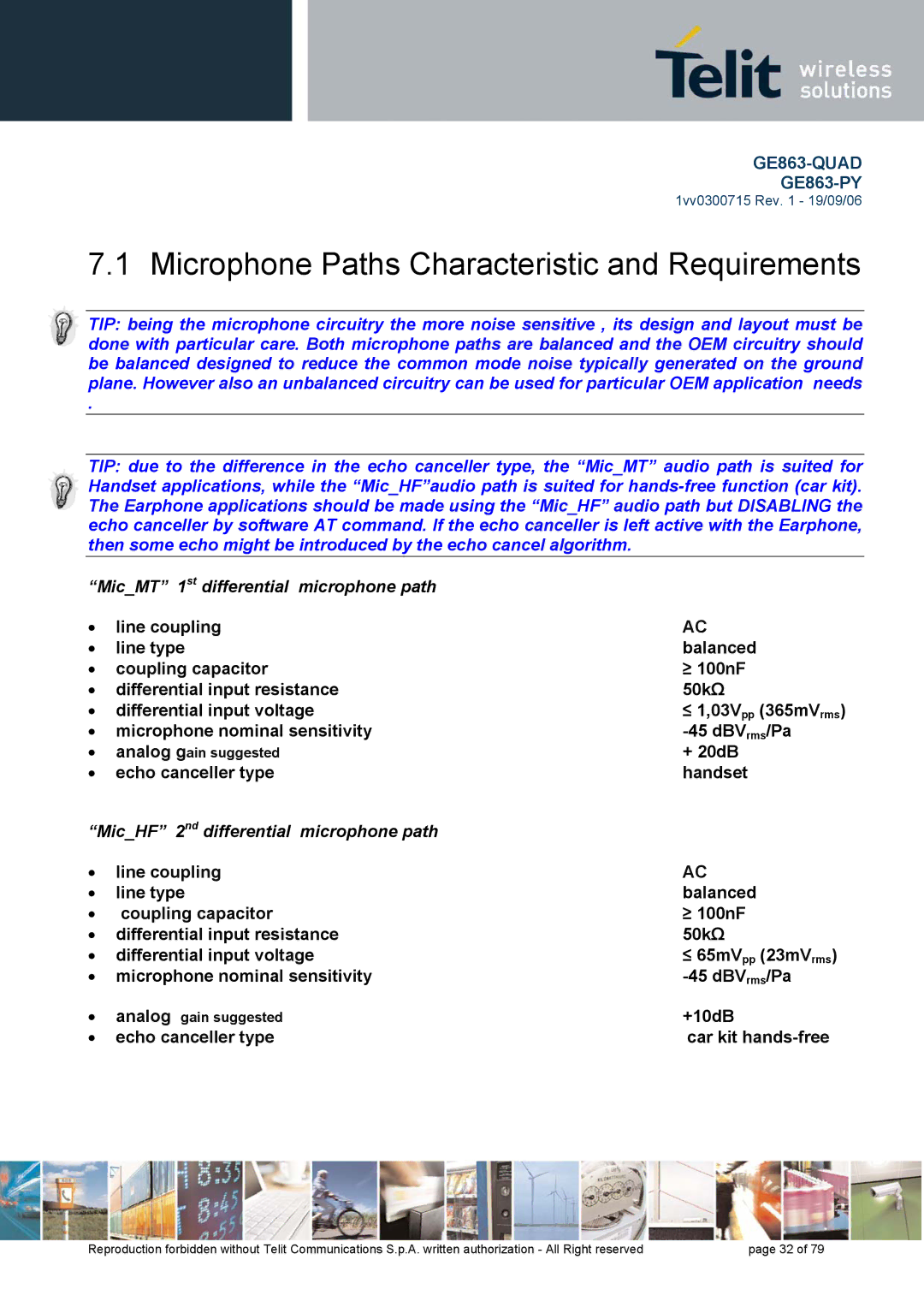
GE863-QUAD
1vv0300715 Rev. 1 - 19/09/06
7.1 Microphone Paths Characteristic and Requirements
TIP: being the microphone circuitry the more noise sensitive , its design and layout must be done with particular care. Both microphone paths are balanced and the OEM circuitry should be balanced designed to reduce the common mode noise typically generated on the ground plane. However also an unbalanced circuitry can be used for particular OEM application needs
.
TIP: due to the difference in the echo canceller type, the “Mic_MT” audio path is suited for Handset applications, while the “Mic_HF”audio path is suited for
“Mic_MT” 1st differential microphone path
• | line coupling | AC |
• | line type | balanced |
• | coupling capacitor | ≥ 100nF |
• | differential input resistance | 50kΩ |
• | differential input voltage | ≤ 1,03Vpp (365mVrms) |
• | microphone nominal sensitivity | |
• | analog gain suggested | + 20dB |
• | echo canceller type | handset |
“Mic_HF” 2nd differential microphone path |
| |
• | line coupling | AC |
• | line type | balanced |
• | coupling capacitor | ≥ 100nF |
• | differential input resistance | 50kΩ |
• | differential input voltage | ≤ 65mVpp (23mVrms) |
• | microphone nominal sensitivity | |
• | analog gain suggested | +10dB |
• | echo canceller type | car kit |
Reproduction forbidden without Telit Communications S.p.A. written authorization - All Right reserved | page 32 of 79 |
